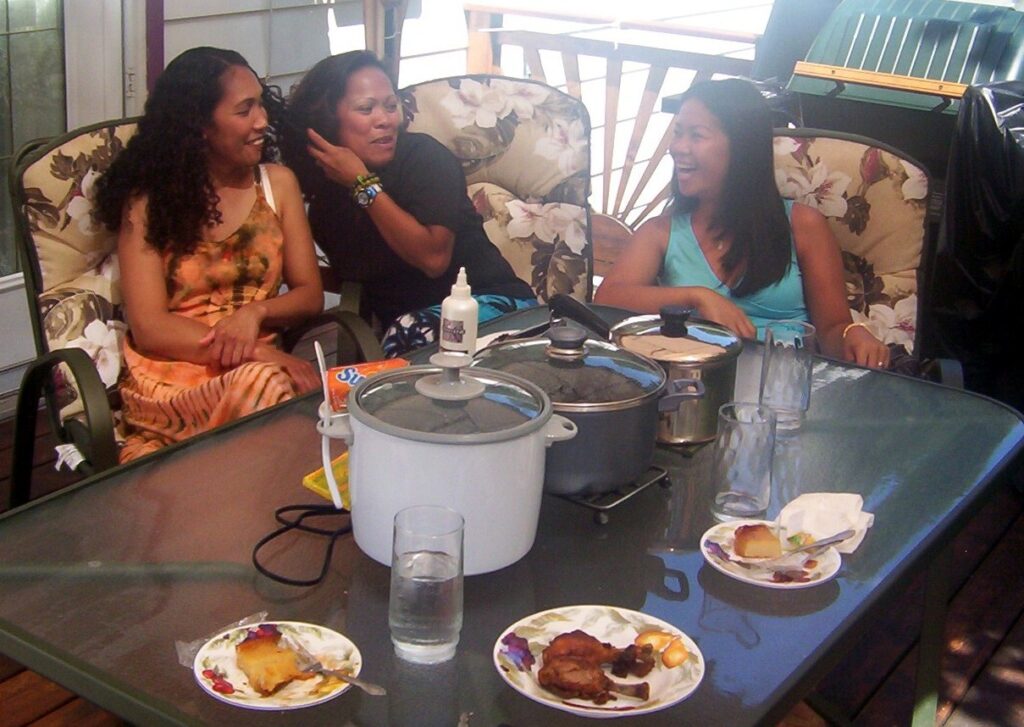Text and Photos by Henrylito D. Tacio
Additional Photo: Shutterstock.com
“Diabetes is on the rise globally, and rising faster in low- and middle-income countries,” said Dr. Tedros Adhanom Ghebreyesus, director-general of the Geneva-based World Health Organization (WHO).
In the Philippines, an estimated 7.3 million people have diabetes, with 3.5 million of them diagnosed and the remaining ones undiagnosed. It is no wonder why the Philippines is now touted as a “diabetes hotspot.”
A study published in the Philippine Journal of Internal Medicine showed the prevalence of individuals with diabetes living in the urban areas (8.5%) compared to those in the rural areas (5.7%). “Diabetes is slightly more preponderant among females at 7.4% compared to males at 7.0%.”
Every 6 seconds, studies show, one person dies of diabetes complications. “Diabetes is the sixth leading cause of death among Filipinos,” deplores the Department of Health (DOH), the country’s leading public health government agency.
But what alarms health officials is that Filipinos diagnosed with diabetes are getting younger. “Children as young as 5-years old have been diagnosed with diabetes,” reports the Diabetes Philippines (formerly Philippine Diabetes Association).

Watch what you eat 
Avoid too much fats
Hereditary and lifestyle disease
Diabetes tends to run in the family. “Diabetes is a hereditary disease passed on from generation to generation,” said Dr. Alberto Romualdez when he was the head of the health department. “When there is a diabetic in the family, no matter how distant a relative the patient is, the characteristic is still passed on through the genes.”
Other predisposing factors include age and weight. Most diabetics discover the disease when they are past 40. On the other hand, three out of four diabetics are overweight. “Obesity is a risk factor for diabetes,” reminded Dr. Gauden Galea, a public health physician who was still with the WHO regional office when interviewed by this author. “Fat also makes the control of blood glucose more difficult, causing lowered responsiveness to insulin.”
Culprit: sugar
Long before Greeks found a word for it, diabetes (passing) was already a plague in Egypt. In the world’s oldest known medical document, dated 1500 B.C., Egyptian physicians referred to the symptoms. The word “mellitus” (honey) was added later by the Greeks, making the descriptive phrase diabetes mellitus – passing sweet – to describe the sweet urine passed by diabetes.
By the 19th century, scientists had learned that the mysterious disease that causes sweetness (which they then knew to be sugar) in the urine was somehow due to an abnormality of the pancreas.
Diabetes, as defined by the Merck Manual of Medical Information, is “a disorder in which blood sugar (glucose) levels are abnormally high because the body does not produce enough insulin.”
Insulin
But before probing deeper, let’s discuss first about insulin, a hormone released from the pancreas. “Insulin controls the amount of sugar in the blood,” the Merck manual states. “When a person eats or drinks, food is broken down into materials, including sugar, that the body needs to function.
“Sugar is absorbed into the bloodstream and stimulates the pancreas to produce insulin. Insulin allows sugar to move from the blood into the cells. Once inside the cells, sugar is converted to energy, which is either used immediately or stored until it is needed.”
The levels of sugar in our blood normally vary throughout the day. “They rise after a meal and return to normal within about 2 hours after eating,” the Merck manual informs. “Once the levels of sugar in the blood return to normal, insulin production decreases.”
“But with diabetes, something goes awry,” says Dr. Willie T. Ong, an internist-cardiologist who serves as a consultant in cardiology at Makati Medical Center. “The pancreas becomes irresponsible. It either stops producing the hormone completely or else produces too much, which leads to insulin resistance. Either way, the concentration of sugar in the blood shoots sky-high.”
Of course, the body tries to eliminate sugar. “The best to do that is via the urine,” says Dr. Isadore Rosenfeld, author of The Best Treatment. “But since the kidneys can’t excrete sugar in lump form, the body must provide enough water to dilute or dissolve the sugar in order to flush it out.”
The net result of all this is that the person will spend more and more time in the bathroom to avoid the sugar and at the water tap to drink the much-needed extra water. This is the basis why the cardinal signs of untreated diabetes are frequent urination and great thirst. In women, the urine rich in sugar provides a good medium for fungus to grow in the vagina, hence the vaginal itching.
Two types
Actually, there are two types of diabetes. Type 1 (formerly called insulin-dependent diabetes or juvenile-onset diabetes) occurs in only 10-15% of all cases and tends to occur in people under the age of 30. Onset is normally sudden and dramatic. More than 90% of the insulin-producing cells of the pancreas are permanently destroyed. The exact cause is unknown, but it’s generally thought to be inherited.
As insulin-producing cells in the pancreas are damaged, insulin must be injected to keep the patient alive. “Aside from being safe, (insulin treatment) is cost effective compared with taking several classes of anti-diabetes pills at the same time,” points out Dr. Linda Lim-Varona, an internal medicine specialist.
Type 2 (called previously as non-insulin-dependent diabetes or adult-onset diabetes) is the most common form; it accounts for about 90% of all cases. In this type, the pancreas continues to produce insulin, sometimes even at higher-than-normal levels. But the body develops resistance to the effects of insulin, so there is not enough insulin to meet the body’s needs.
Usually, Type 2 diabetes occurs in people over 40, but it is now becoming more prevalent in children and teenagers. Studies have shown that most children diagnosed of having diabetes eat too much high-calorie junk food. “Across the globe, more people are consuming high-fat foods that are heavily processed and low in fiber,” the International Diabetes Foundation notes. “Increasingly, families are eating food prepared outside the home.”
Symptoms and complications
Medical science says both types have very similar symptoms. Among the most common signs are excessive urination and abnormal thirst. “I was always thirsty. I had to go to the toilet frequently at night, and my urinal always had ants,” recalled the late health secretary Juan M. Flavier on how he discovered he had diabetes.
Other symptoms include unusual hunger, rapid loss of weight or excessive weight, nausea and vomiting, blurred vision, drowsiness, itchy skin and skin disorders, cramps or numbness in the limbs, and abdominal pain.
Dr. Augusto D. Litonjua, founding president of the Philippine Society of Endocrinology, says complications that arise from diabetes include blindness, heart diseases or stroke, kidney trouble, impotence, renal failure, and amputation.
“Blindness can occur 25 times more in diabetics than non-diabetics,” Dr. Litonjua says. “They are also twice as prone to heart attacks and strokes, 17 times more prone to kidney disease, five times more prone to gangrene and about 50 percent of men with long duration of diabetes are impotent.”
Here’s bad news for pregnant women: studies showed birth defects occur in 5-10% of women with diabetes, four times higher than in women without diabetes.
Importance of diet and exercise
Despite medical advances with new drugs and insulin formulations, diet remains “the cornerstone of diabetes treatment,” to quote the words of Dr. Cynthia Chua-Ho of the Far Eastern University Hospital.
Medical experts advise that 20-30 percent of the total dietary energy should come from fats and oils. Protein should not exceed more than 15% of the total energy required. The bulk, however, should come from carbohydrates: 55-65% of the total energy. But people with diabetes must talk with their doctor or dietician to know the suitable diet for them.

Generally, diabetic patients are advised to eat most of the following: legumes, lentils, cereals, fresh fruits (non-sweet), and vegetables. What about rice, the staple of Filipinos? For people with diabetes, when eating rice, the key is moderation.
Likewise, people with diabetes must have small portions of foods rich in protein like fish, seafood, lean meat, skinless chicken, nuts, low-fat cheese, yogurt, and milk. They must minimize eating foods and drinks that contain a lot of simple sugar, such as honey, sweets, cakes, soft drinks, and beer, among others.
Lifelong project
Living with diabetes is a lifelong project. But these days, diabetes can, for the most part, be controlled quite well with treatment which is simple and highly successful. “The goals of treatment for diabetes are to improve the body’s use of insulin, reduce its need for insulin and thus provide glucose control in the blood,” a doctor explains.
Antonio M. Ajero is a living testament. The editor-in-chief of EDGE Davao could not remember the symptoms anymore, but he was diagnosed with suffering from diabetes after the free annual examination that was offered by the University of Mindanao in Davao City. He was then the station manager of DXMC, a radio station of the UM Broadcasting Network. This was in 1978.
“The first time, I was diagnosed to have a sugar level of 9 plus, I was simply given a list of things – food and drinks – to avoid. Actually, it was a list for people who have gout,” he recalled.
Ajero followed the “avoid list” and did brisk walking. The next time he had the annual exam, the numbers were down – chiefly sugar level and bad cholesterol.
Today, he is as healthy as ever. In fact, you cannot tell that he has diabetes. “The general idea is trust and obey your diabetologist,” he said of his secret.
These days, he lives on semi-penury – that is, when he is in a situation where he cannot be picky with his intake simply because there’s nothing else available. “It’s worse now that I am a widower for the last 12 years,” he admitted.
Unknown to many, Ajero follows a proper healthy diet. “I do my best with my intake,” he pointed out. “I think exercise and avoiding risky food are the two best practices that matter to me.”

